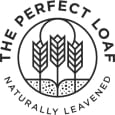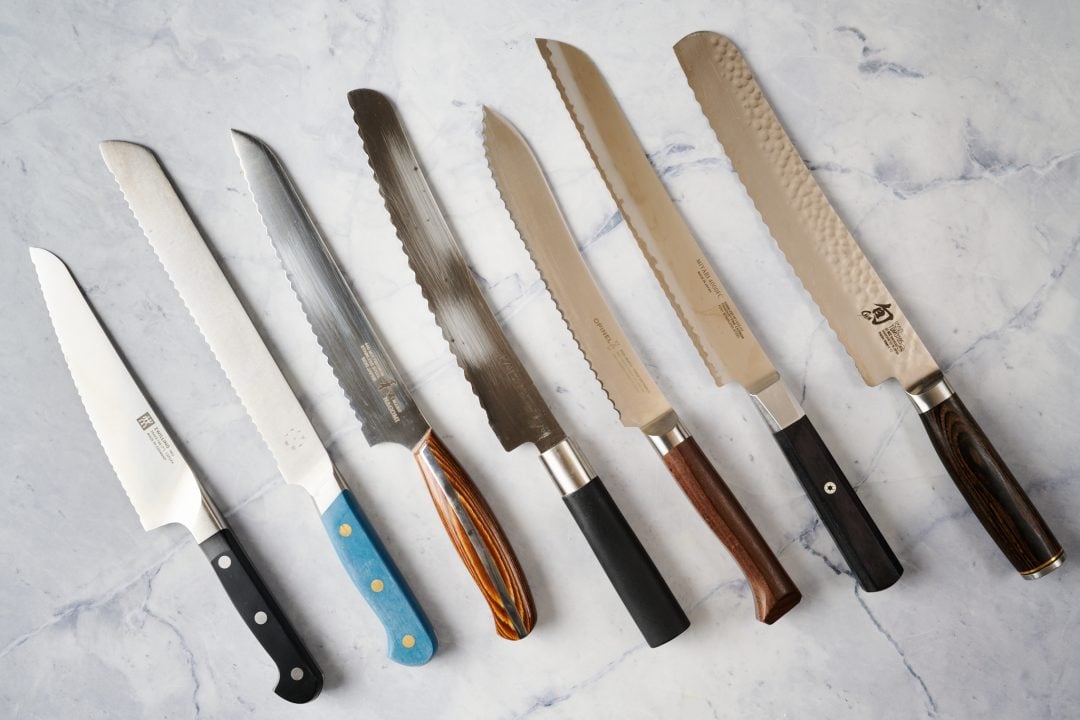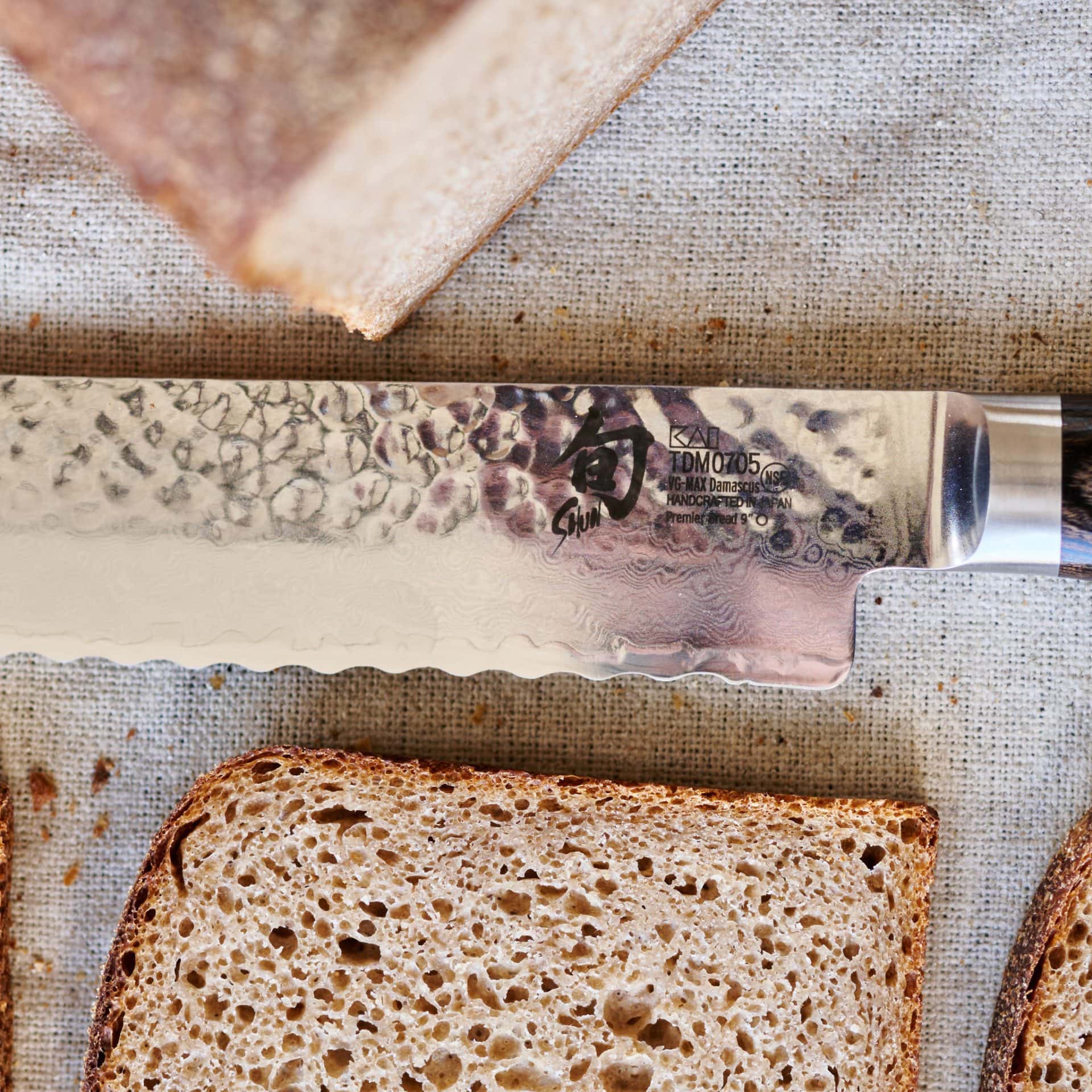A quality bread knife will be one of the best investments you make. Over the years, I’ve baked countless loaves of sourdough bread with all sorts of textures and shapes: from soft and delicate, to seeded sandwich-style, to thick-crusted and free-form. Regardless of what kind of bread you’re baking at home, one thing is going to be true: you want to use the best bread knife for sourdough bread to ensure you’re not tearing the loaf and crushing the crust and crumb you worked so hard to achieve.
And not all bread knives are best for sourdough! Over the years, I’ve tried countless knives, always looking for that perfect one that will cleanly cut bread. I’ve purchased and tried every item featured in this post, and I’m excited to share my findings.
In this guide, let’s look first at my favorite knife for most people, then an upgrade pick. After explaining what makes a knife a bread knife and my criteria for a good one, I’ll review a few more options I’ve tried and enjoyed using. Then, we’ll review some tips for how to slice bread effectively, and at the end, I’ve included some information on washing and storing bread knives to ensure they function and look their best for years.
First, here is my pick for the best knife for sourdough bread for most people:
Real quick: The Best Bread Knife for Sourdough
Update June 17th, 2024: Kai has discontinued my previous favorite bread knife, the Kai Wasabi, and has released the Kai PRO in it’s place. I’ve been testing this new version, and it’s just as effective as the previous one (maybe even more so).
The Kai PRO Bread Knife is the best bread knife for sourdough. This knife offers the best cutting performance and longevity at a very economical price. It has an extremely sharp serrated blade with teeth and scallops, is made from high-quality stainless steel, and has excellent ergonomics.
This knife also satisfies all of the criteria I look for in the best bread knife for crusty sourdough bread (more on this below):
- It has a serrated blade that’s 9-inches long
- The handle is offset from the cutting edge, so you don’t hit your knuckles on the counter
- It has an ergonomic, non-slip handle that’s securely fastened to the blade
- It is extremely sharp and holds its edge for years
- Full tang construction for strength and stability
Upgrade Pick: The Shun Premier 9-inch
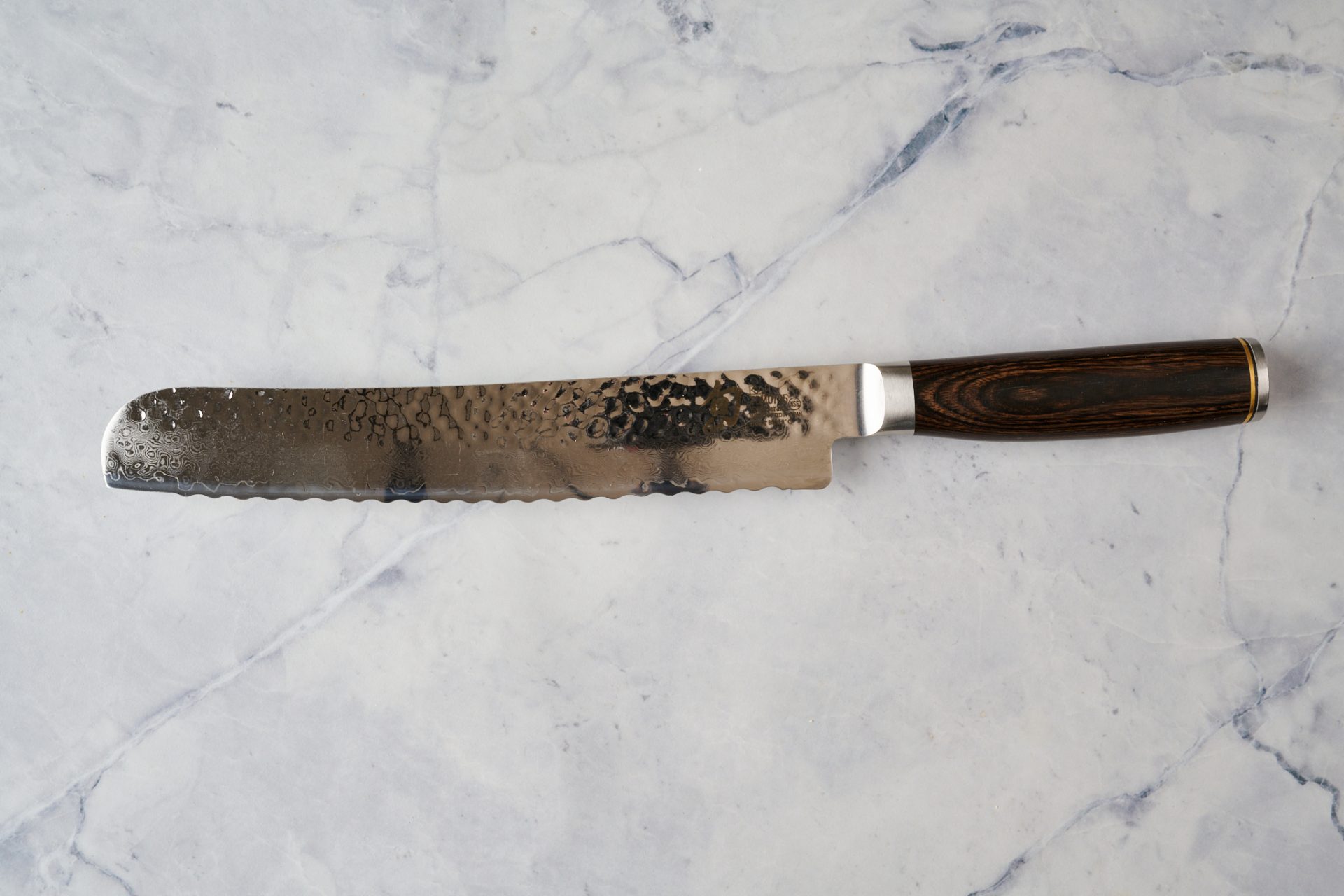
If you have a higher budget, the 9-inch Shun Premier Bread Knife is the most effective and highest-quality bread knife I’ve tried.
This knife is an investment, but I have yet to find a knife that slices equally well, whether you’re cutting a crunchy loaf or a soft and delicate bread. It’s incredibly sharp, holds its edge for a long time, has perfect ergonomics, just the right amount of heft, and the 9-inch long blade provides maximum cutting coverage.
Here’s why I love the Shun Premier bread knife:
- The blade is extremely sharp and retains its edge for many years
- The blade is hand-crafted from Damascus steel (legendary for its sharpness)
- The wide scalloped areas between the points make cutting easier
- It’s heavy without being too heavy
- The handle is not in-line with the cutting portion of the blade, meaning you can slice down to the cutting board without hitting your knuckles
- Full tang construction
- Shun provides free lifetime honing (I’ve sent mine, and it came back like new)
In my YouTube video below, you’ll see me using the Shun knife to slice through a soft and delicate Pain de Mie sandwich bread. You can see the construction quality, the blade’s heft, and just how easily it slices (it makes cutting bread look like slicing butter).
What Is a Bread Knife?
Mostly, a bread knife has what’s called a serrated blade. The edge you cut with has a series of sharpened teeth separated by sharp, scalloped recesses. The teeth are designed to split into the bread’s crust, while the scalloped areas between the teeth slice softer areas like the crumb. This blade type is meant to be used by sawing back and forth with minimal downward force, versus a straight-edged blade (like a chef’s knife) that requires a downward chopping motion.
Why Should I Use a Bread Knife for Cutting Sourdough Bread?
A serrated bread knife makes slicing sourdough bread easier because the saw-like points grip the crust and slice it cleanly through. Because slicing is easier, the resulting pieces of bread will be more uniform and cleanly cut, and you won’t crush or tear the loaf of bread when cutting.
If you use a non-serrated blade to cut your bread, you’ll have difficulty slicing through the crust and will likely smash the loaf as you put too much downward force on it. You’ll find that the blade slips on the crust rather than sawing into it as a serrated knife will.
And don’t worry, just because it’s called a “bread knife” doesn’t mean it can only be used for bread! Read to the end of this post to see how a bread knife is also super useful for cutting other things in the kitchen (like tomatoes).
What To Look for When Choosing a Sourdough Bread Knife
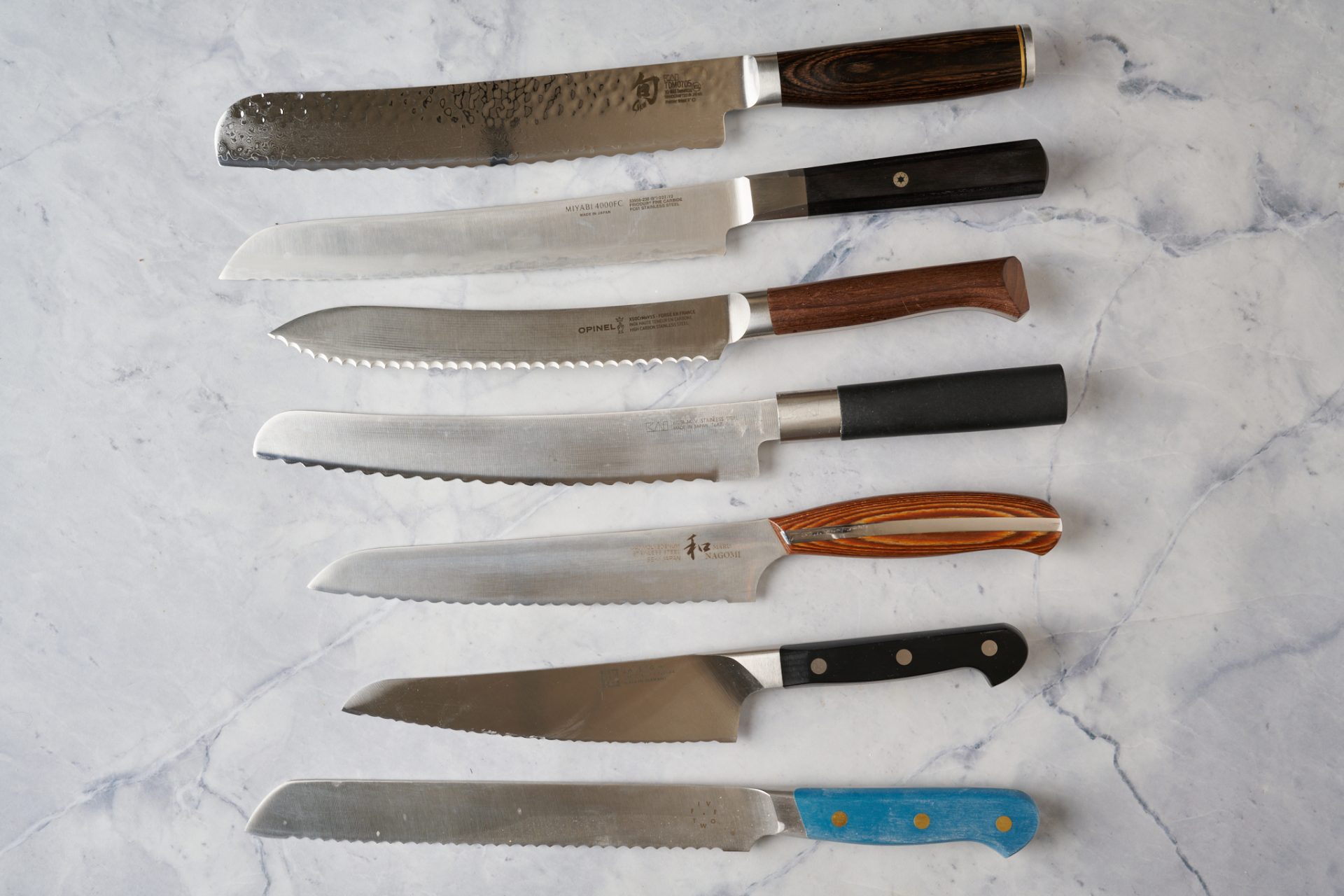
I’ve purchased and evaluated many bread knives over the years (as you can see above), and I look for a few key criteria when choosing the right one. A knife doesn’t need to check all of these boxes, but the more criteria a knife satisfies, the better it will be at slicing bread and the longer life it will have.
| Bread knife must-have checklist | Reason |
|---|---|
| Moderately heavy | A weighty knife feels more solid in the hand and tends to slice easier and more effectively |
| At least 8-inches in length | A long blade helps reduce the amount of work needed to slice |
| Blade made from high-carbon stainless steel | This type of steel will keep an edge and remain sharp for years without the need for sharpening |
| Pointed serrations with scalloped (concave) areas between | The pointed serrations will bite into the crunchy crust while the concave areas between them slice (and make slicing into softer foods easier) |
| A curved blade | A curve makes slicing easier because your hand is not in-line with the blade, meaning your knuckles won’t scrape the cutting board while you’re slicing |
| Comfortable and ergonomic handle | The knife handle should be long enough to fit in your hand and be made from a comfortable, non-slip material |
| Full tang construction | The metal of the blade extends through the handle, which increases the strength and balance of the knife |
How Long Should a Bread Knife Be?
An important factor when choosing the best bread knife for sourdough is the blade’s length. I prefer the blade to be at least 7 inches long, with my favorite knives being either 8 or 9 inches. A long blade helps cleanly cut cross-sectional slices without the point of the blade getting “stuck” in the loaf while you’re cutting.
Think about the bread knife blade length similar to a saw used to cut large trees: You don’t want to use a saw that isn’t at least a little longer than the width of the tree!
My List of Other Fantastic Bread Knives
The following knives are also wonderful, each with pros and cons and varying price points. While I believe the Kai Wasabi is the best bread knife for sourdough for most people, any of the following knives would be a welcome addition to any kitchen (and I own them all!).
An Ergonomic and Extremely Sharp Option: The Opinel Intempora 8-inch
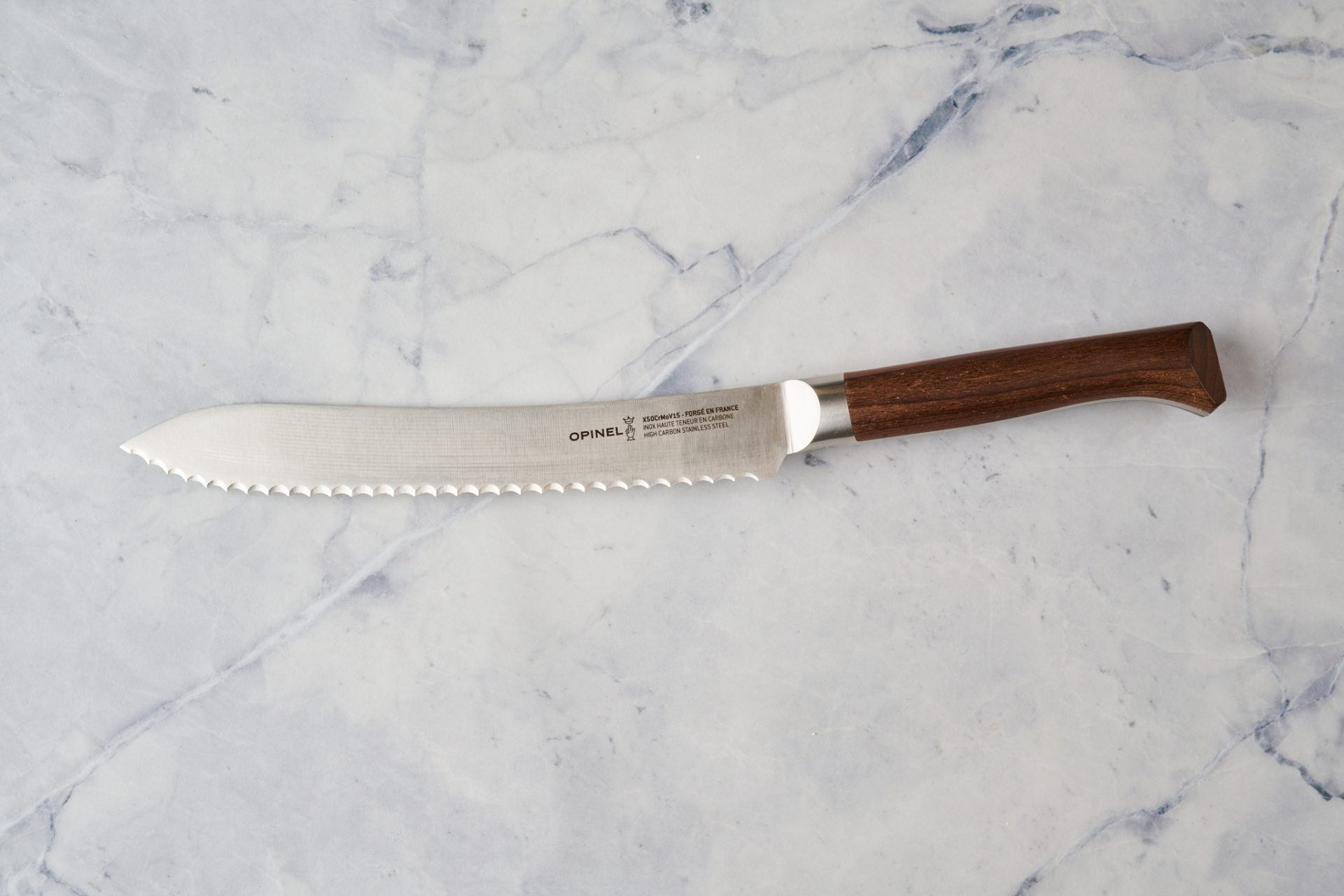
This Opinel Intempora bread knife is a recent addition to my kitchen, but it’s a fantastic knife that’s already made its mark (cut?) on many of my loaves. It feels larger and more substantial than the others listed and in a good way. The handle is extra large, making gripping the knife easier and more comfortable. The blade is very long and extremely sharp, and the pointed tip can make that first cut into the crust a bit easier.
Why Buy the Opinel Bread Knife:
- The handle is very comfortable, large, and easy to grip
- The serrated blade is curved and full tang
- The blade’s edge is extremely sharp and holds an edge well
- The blade is made from high-carbon steel (12C27 Swedish Stainless Steel)
- It has a lifetime warranty
A Lightweight But Effective Bread Knife: Miyabi Koh 9-inch
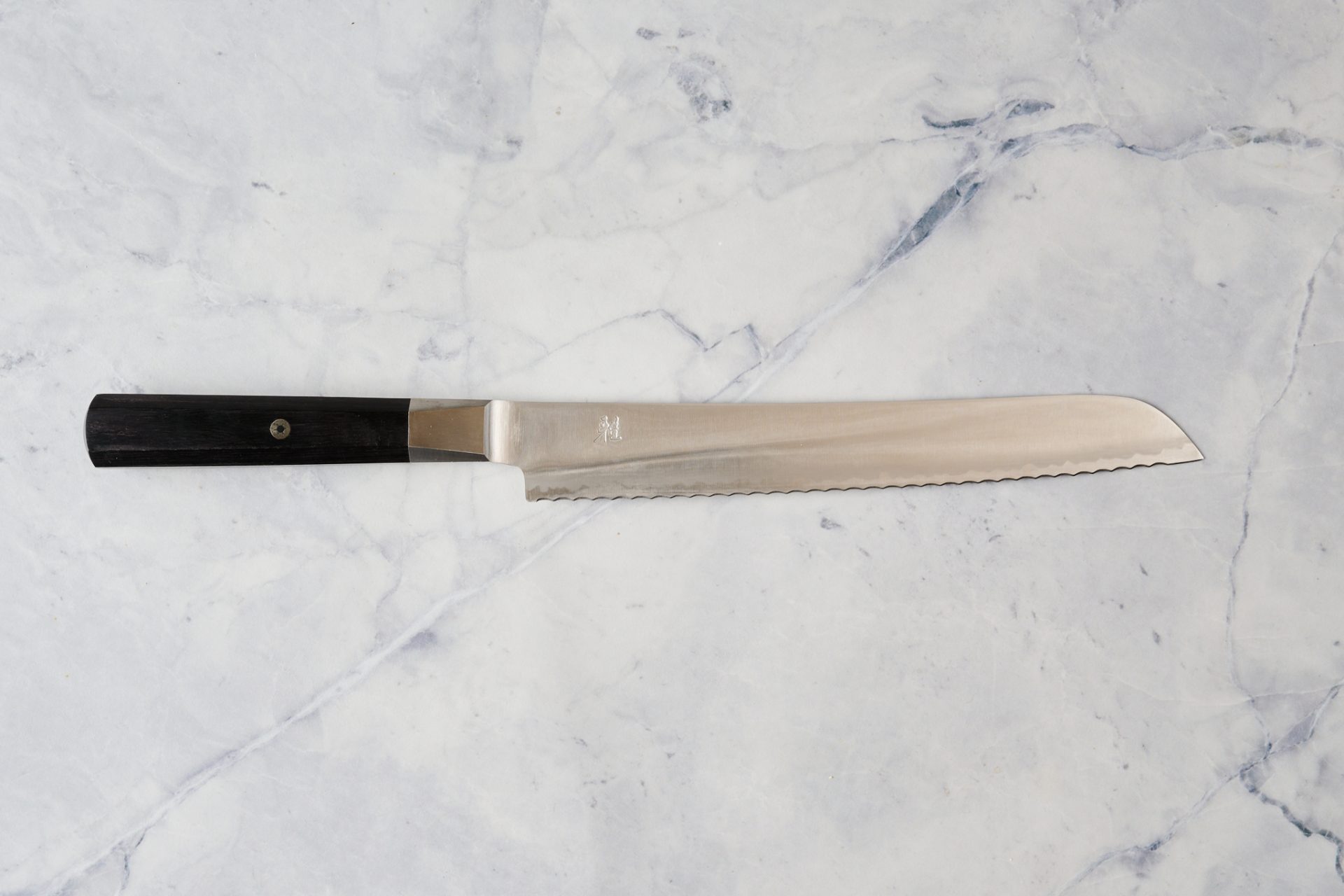
At first glance, the Miyabi Koh 9-inch serrated bread knife doesn’t seem to satisfy my criteria for what makes for a great sourdough bread knife. However, this knife is somewhat in a category of its own.
It is a lighter-weight bread knife than many others on this page, but rather than being a con, for this knife, it’s a pro. It is extraordinarily sharp, and because of this, the knife can get away with being lighter because you don’t have to press down as hard to cut through the crust.
Why Buy the Miyabi Bread Knife:
- You prefer a lighter knife but one that’s just as effective as a heavier option
- You value a handmade, exquisitely crafted knife
- The blade is incredibly sharp
- It has a thin but very strong blade, making it more like cutting bread with scalpel-like precision
- It is gorgeous in its simplicity
The Best Way to Cut Bread with a Bread Knife
When slicing with a sharp, serrated bread knife, you want to perform back-and-forth cutting motions–like how you would use a saw–rather than using downward force while cutting as you would with a chef’s knife. As I mentioned, the serrated edge will grab onto the crust at the points, so performing a sawing action will allow these sharp points to grip and cut cleanly through the crust.
It may seem mundane to outline the steps I take when cutting a crusty loaf of bread, but I find these tips helpful for both slicing bread easier and avoiding injury.
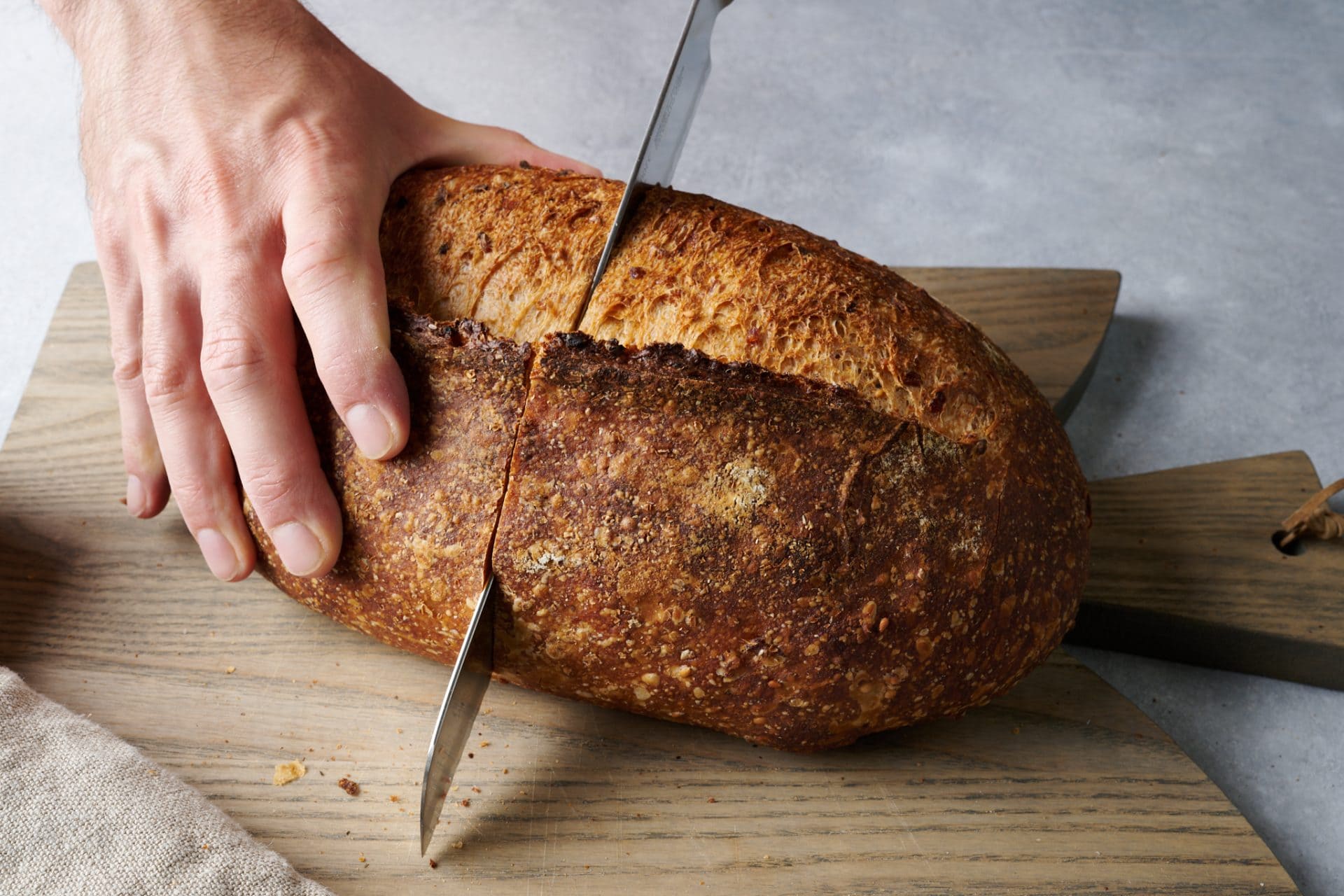
If you’re cutting a boule or batard, I like to first slice the loaf directly down the middle creating two halves, and then cut slices from that cut outward. Cutting larger loaves in half first allows you to store the other half with the crumb facing down on the cutting board, which is the proper way to store sourdough bread for freshness.
How to Slice Thick and Crusty Sourdough Bread
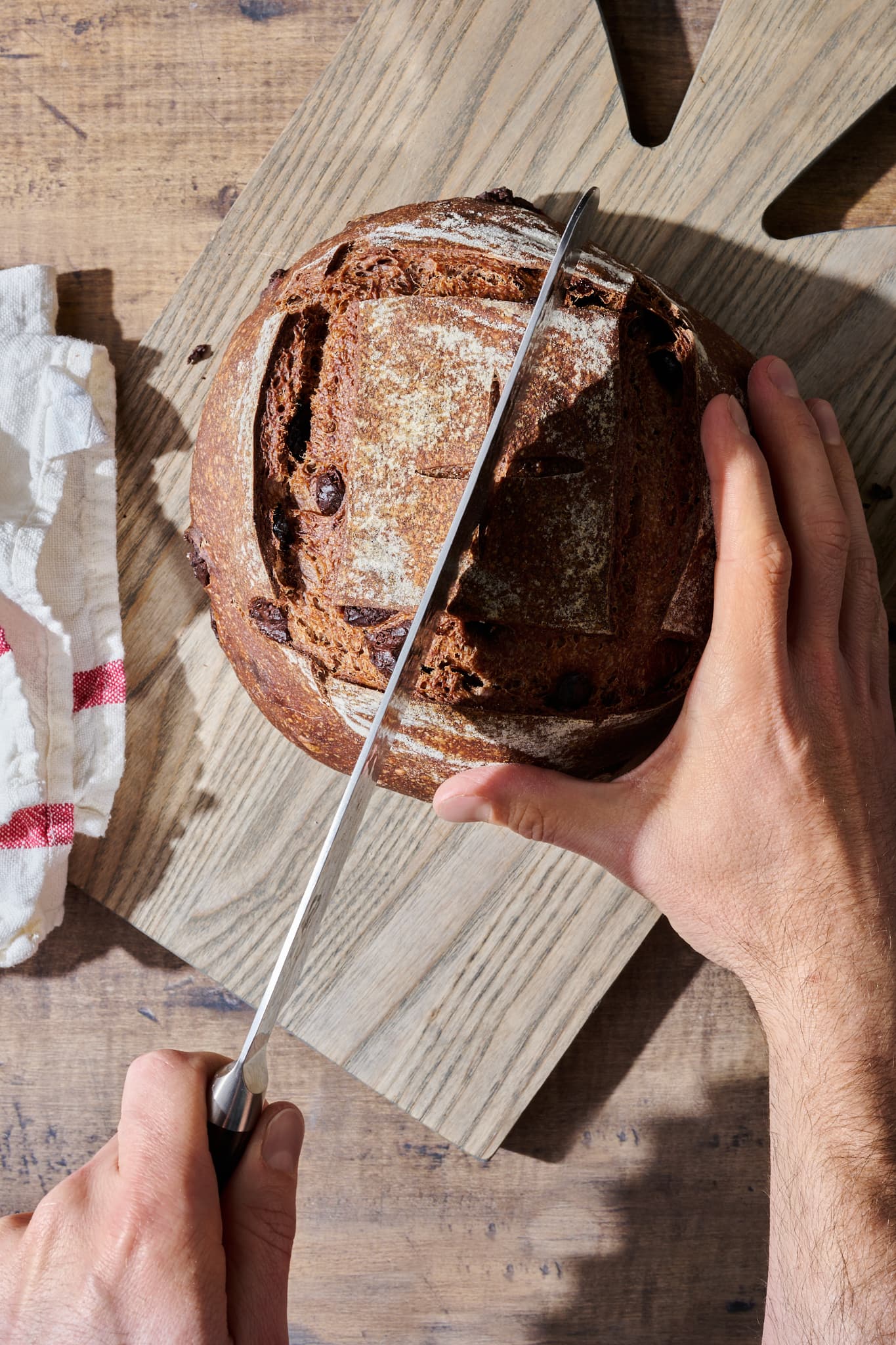
- Place a cutting board securely on the counter (to prevent slipping, put a damp towel underneath the cutting board)
- Place your loaf of bread in the middle of the board and hold the bread knife securely in your hand
- Hold a side of the loaf with your free hand, away from the center
- Rest the blade on the top of the loaf and gently saw back and forth first to create a groove. This groove will prevent the knife from slipping on the crust if you try to exert too much force too quickly
- With the blade in the groove, saw back and forth to begin cutting into the loaf. Be sure not to press down too aggressively; the serrated edge will naturally grip the crust and cut into the bread
Repeat the above steps to create uniformly thick slices from the middle to the end, then repeat for the other half of the loaf as desired.
Make Your Bread Slices Uniform
To make cutting equal-sized pieces of bread easier, use a bread-slicing guide. Typically made of bamboo, these tools help keep the bread knife in a straight line when sawing back and forth. Additionally, they can help eliminate the chance of cutting yourself.
What is the Best Way to Wash a Bread Knife?
Wash your bread knife under warm water with a gentle sponge and dish soap to ensure it has the longest life. After washing, dry the knife immediately with a towel and store it on a magnetic knife holder or in a wooden knife block.
Do not put it in the dishwasher. Keeping your serrated bread knife out of the dishwasher will help it retain its sharp edge for longer, reducing the need for frequent sharpening (which is difficult to perform on a serrated edge) and keep the handle in good shape (the heat of the dishwasher can warp some knife handles and ruin others).
What Else Can I Cut with a Bread Knife?
A bread knife can be used for much more than cutting sourdough bread. Compared to a straight-edged chef’s knife, the bread knife’s serrated edge does a great job of cutting through items with thick skin (like tomatoes) or even delicate items like pastries and cakes. The serrations, in addition to the length of the blade and effective sawing action when cutting, make a bread knife ideal for cutting:
- wide cakes like cheesecake or angel food cake
- sponge or layer cakes
- pies
- phyllo dough
- laminated pastry like croissants and even bomboloni
- soft but thick-skinned fruits and vegetables like tomatoes and cucumber
- thick-skinned but soft, whole citrus fruit (oranges, lemons, limes, etc.)
So while it may seem like a bread knife is a specialty item in the kitchen, you can use it to cut many things, making it a versatile investment.
Can I Use an Electric Bread Knife?
If you have difficulty sawing into a loaf of bread, even with the incredibly sharp knives above, an electric bread knife might be a good option. The best electric bread knife I’ve seen is the Mueller Ultra-Carver electric bread knife.
Bread Knife FAQs
Can I sharpen a bread knife?
Because a bread knife has a serrated edge, it’s not recommended to sharpen it with a home sharpener or honing rod (honing steel). There are special bread knife sharpening tools out there, but in my experience, they don’t work very well. Instead, contact the bread knife manufacturer; many offer free sharpening for the life of the knife.
What kind of knife is best used to cut bagels?
I use a serrated bread knife to cut bagels. The sharp teeth of the bread knife bite into the bagel’s chewy crust, and the sharp razor-like scallops between the serrated edge slice cleanly into a bagel.
Is a bread knife used to score bread dough before baking?
No, a bread knife is typically used only for cutting fully baked loaves. To score dough, I recommend using a small, sharp knife or special blade used to cut bread dough that’s called a lame (pronounced, lah-m).
Should a bread knife be curved?
A bread knife with a curved blade will make cutting easier because the blade will curve away from the hand that is holding the handle. As you cut the bread, you won’t knock your knuckles on the counter.
Can I wash a bread knife in the dishwasher?
No, a bread knife should not be washing the dishwasher! Washing knives in the dishwasher can dull the blade over time, and the high heat can ruin the handle (especially if it’s made of wood).
What’s Next?
Now that you know exactly what to look for when buying the best bread knife for sourdough bread, check out my guide to storing bread after it’s been cut. Storing sourdough correctly after slicing will mean it stays fresher for longer.
Or, if you’re looking for more of the best baking tools, have a look at my favorite jars for my sourdough starter, which I think makes daily feedings a whole lot easier (and cleaner). Or, check out my number-one recommendation for all bakers: the best kitchen scale for making bread.
Happy baking (and cutting)!
